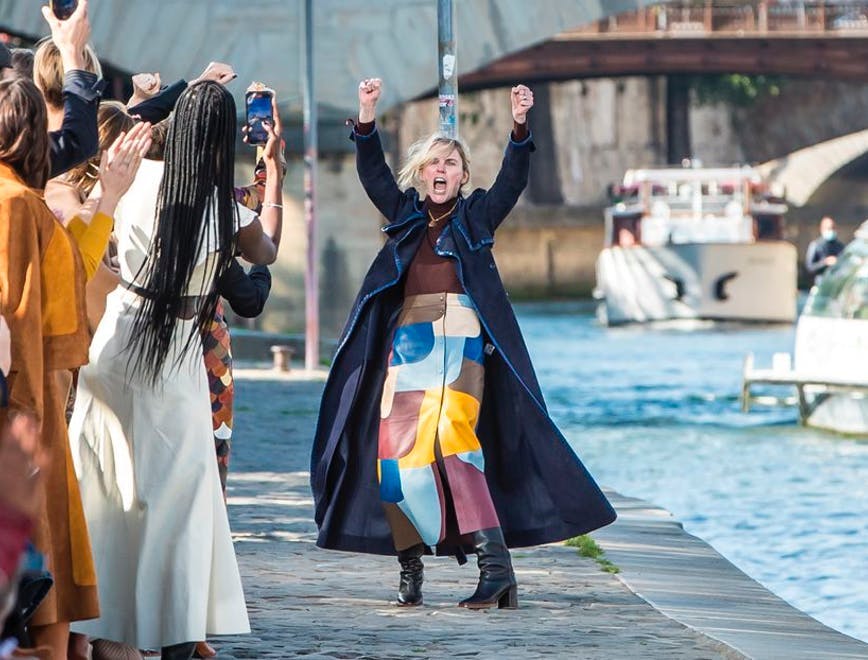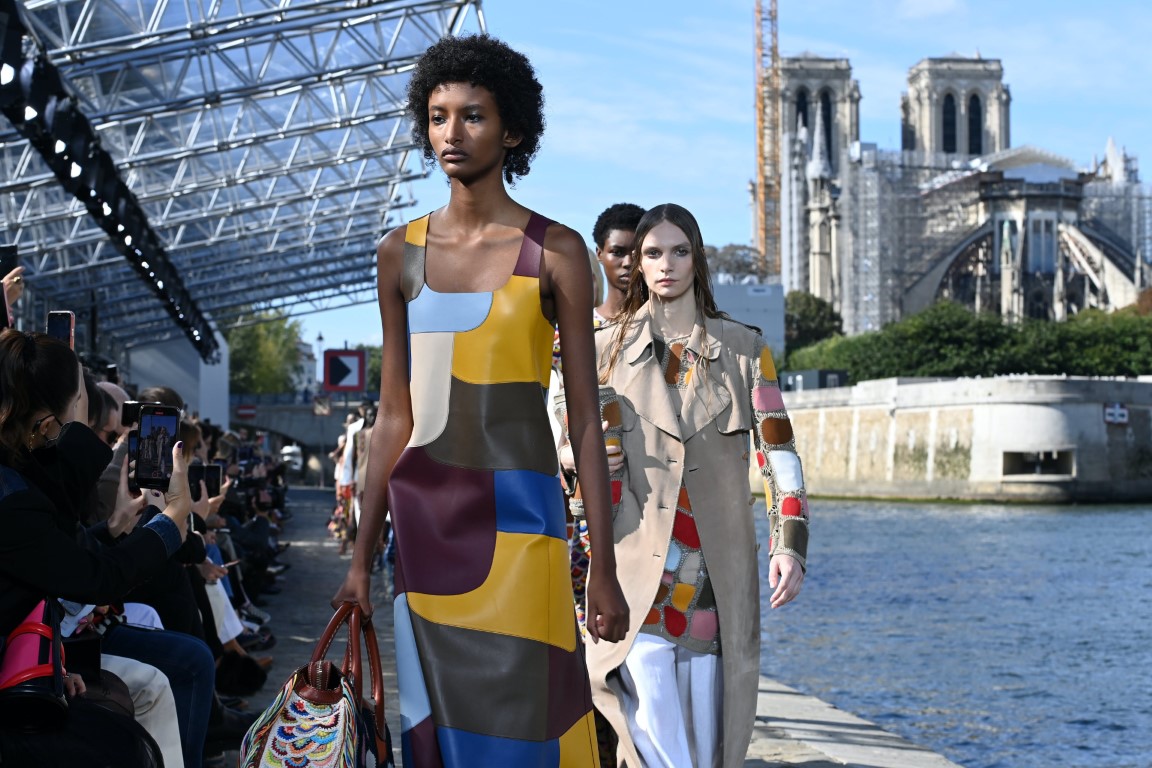What does the concept of sustainability in fashion need to change?-Fashion trends
Sustainability in fashion is an ongoing movement in the fashion industry with many strides forward.
Fashion companies have learned to reduce their waste and introduced recyclable textiles, while making broad commitments to reduce their impact on the environment.
While 2021 and 2022 have seen popular initiatives that promise a greener future, the fashion world may want to rethink its interpretation of “sustainability.” This year has brought new achievements worth celebrating, but to categorize the industry as sustainable makes sense to ignore the stark truths about the true role fashion plays in climate change and devastation. environment.
What we are doing right
The interest in sustainability has also been well received by both the business and consumer worlds. In the retail research group’s sustainability edited report, products labeled as “sustainable” grew by 176% between 2019 and 2021. Consumers themselves are increasingly concerned about the ethics of brands they buy, with McKinsey’s 2020 consumer sustainability survey identifying 38% of respondents as having expectations for fashion brands to “reduce their negative impact on environment”, with high responses to other indicators including working conditions and employee welfare.

Brands like Stella McCartney and Gabriela Hearst have long placed sustainability at the core of their ethics and practices. This has since extended to other influences, with Hearst bringing eco-friendly insights to Chloé earlier this year. Now, Chloé is the only luxury fashion house to be graded B Corp Certified, which means they meet the highest ethical standards for a company, from employee benefits to interactions with the environment. The brand also recently introduced a sustainability metric to measure its social and environmental impact, which can be adopted by the broader fashion industry.

Good On You is an organization that researches extensively on brand ethics and practices, with nearly all of the prominent fashion labels analyzed by their team. Stella McCartney and Chopova Lowena are two of the few designers to receive an “Excellent” rating, defined by the way they care about the planet, animals, and people. Stella McCartney is a pioneer in the field with an array of innovative organic materials, circulation policies and anti-deforestation commitments.
Gucci, Vivienne Westwood and Marine Serre are other brands that care about the climate. Gucci is effective in reducing greenhouse gas emissions and Marine Serre’s capacity building policies promote the necessary circulation in the use of textiles. Vivienne Westwood is also recyclable and free of plastics and non-recyclable materials, such as polyester. In 2020, Vivienne Westwood launched a green initiative with the nonprofit Canopy to fight deforestation. With the increasing visibility of fashion brands taking steps to control their impact, there is a call for others to take similar strides for widespread improvement.
What we need to adjust
Although haute couture does not exactly cause fast fashion’s adverse effects on the environment and humanity globally, many brands have fallen into the trap with similar marketing strategies as Zara and H&M in hopes of presenting themselves as environmentally conscious people. This is a phenomenon known as “Greenwashing”.

With more and more brands joining earth-conscious socialism, “Greenwashing” is certainly a compelling tool to generate buzz, but true sustainability requires testing. and balance and transparency of day-to-day operations to identify growth opportunities. Many brands have committed – and failed – to introduce more sustainable practices in the Global Fashion Show’s 2020 Pledge, meeting only 64% of the target.
Greenwashing makes consumers believe they are supporting a sustainable brand when they are not. Chanel has begun experimenting through green technology investments, especially with the startup Evolved by Nature working to create natural fibers to replace synthetic fibers. It seems that these investments are few and far between, as the brand has not followed the implementation of better practices within the company itself. While aiming to reduce emissions, Chanel uses little or no eco-friendly materials – a fundamental step towards becoming more sustainable (see Gucci).
As prices for luxury goods by designers like Chanel are rising, consumers expect that exclusivity to ensure ethical practices. Biotech company Genomatica released a 2019 consumer report that found that 58% of consumers “care about the material of their clothes and want them to not harm the planet” and 47% rate it. “clothes are sourced from renewable sources or natural materials as a leading sustainability feature”.
A clear indicator of these values is the bullish resale price reflex. Praised for its true sustainability, the consumer propensity to shop is, as of 2020, just one of many aspects of shopping that the pandemic has revolutionized. Resale platforms like Depop and The RealReal have exploded in popularity. Vintage design, storied fashion, and luxury resale are trendy consumer buzzwords – thanks in large part to TikTok – referring to a growing preference for second-hand fashion. The same McKinsey survey demonstrated that 15% of Gen Z and 16% of millennials intend to shop second-hand more often, largely due to the economic impact of covid-19.
No brand is completely sustainable; Between fashion’s exorbitant waste, fossil fuel emissions, cheap labor and overproduction, the industry is still contributing a lot of harm despite the plastic and fabric bans. deadstock.

This year’s State of Fashion report from McKinsey presents recycled textiles as the leading way to increase sustainability practices across the industry. According to the report, material reuse is “one of the most important levers the fashion industry can use to reduce its environmental impact is closed-cycle recycling”, which promises ” limiting production, exploiting raw materials and reducing textile waste” through the cyclical use of existing materials.
In addition to production methods for deployment, perhaps a change of opinion is also what we are missing. Coming up with innovative new strategies to address more growth areas requires full awareness of the standards and competencies of the company in which the new product is being launched. According to the Harvard Business Review, understanding that any manufacturing practice is inherently unsustainable is one way to be realistic about the state of fashion so as not to become complacent. This connects to a company’s supply chain transparency, textile usage and emissions. When considering Chloé’s Leverage/Social Performance and Social Impact Measurement tools, self-perception is included in the model because it is based on transparency about productive effects, the presence of value chain, employee ethics and many other indicators. Chloé, among other brands that consistently and clearly reports their environmental behaviors, has created a starting point for a thriving sustainable industry; a commit is definitely still in the beginning stages, regardless of our current process.

The simple fact is that creating new clothing and accessories requires manufacturing that is sourced from an already degraded environment. Despite countless positive initiatives, a real commitment to sustainability would be to stop production altogether; which literally will never happen. When we see the latest collection coming out during fashion week or a celebrity dresses up at the Met Gala, let us not be fooled into thinking that the production behind it has little consequence. emissions, landfill pollution and the earth’s ecology. Continuing awareness of this sad truth could be the key to solving the crisis of fashion sustainability, free of the bluewash and PR illusions.
at Blogtuan.info – Source: 24h.com.vn – Read the original article here





